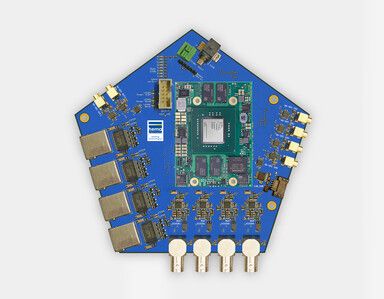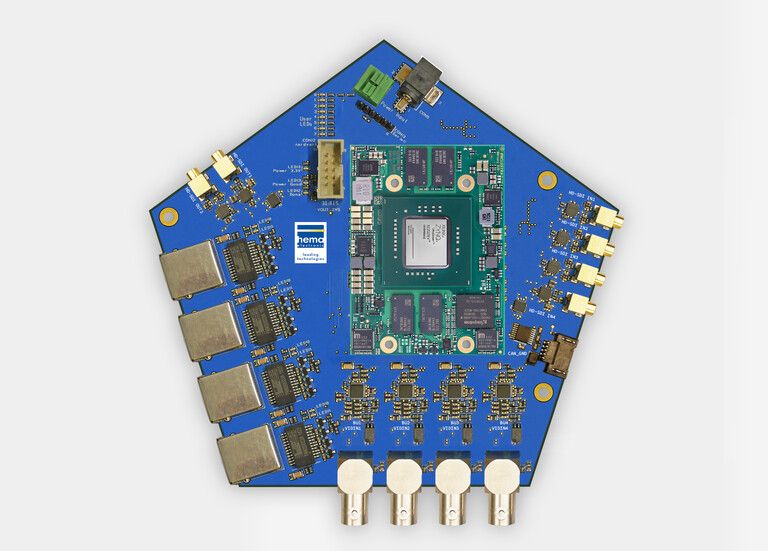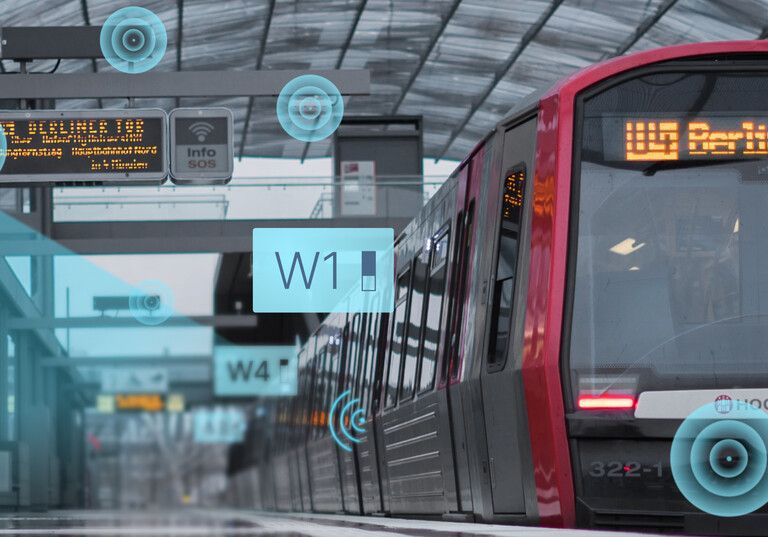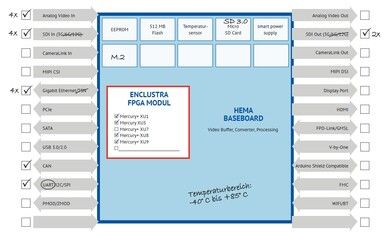The challenge
Video-Distribution-Unit
Development of a robust optronic system suitable for series production for wheeled vehicles of a German military technology company
The solution – finished in 6 weeks:
Custom electronics for stationary and mobile video data distribution

Mobile systems often have a large number of video sensors, including day vision and thermal imaging cameras, TOF, radar and LIDAR systems. The video matrix ensures that every user receives the video data relevant to him at the time - making what the sensors see visible to humans. The challenge for this system: to manage different video sources and up to 16 camera inputs.
The video distribution unit is based on the modular hema system construction kit for embedded vision systems. The core element of customer development is the management of video data in the FPGA: up to 16 HD-SDI inputs are processed and can be distributed to the outputs. All functions are implemented with lowest latency times of less than 35ms. Ultra Low Latency is possible both with pass-through (approx. 5ms) and compression (e.g. Xilinx Ultra Low Latency IP-Core, approx. 35ms). Furthermore, the requirements for robust and reliable electronics for mobile use are guaranteed.
Availability and maintainability were also important general conditions. With the video distribution unit, a multitude of different input and output interfaces can be realized. Depending on the processing power requirements and the number of desired inputs and outputs, different modules can be flexibly combined and the processing power scaled. For example, various FPGA modules (SoCs) from our cooperation partner Enclustra can be used, such as XU1, XU5, XU8 or XU9 modules. Any inputs can be switched to any outputs via a matrix. Pass-Through is also possible in order to output a video signal as directly as possible and without time delay (latency).
HD-SDI, 3G-SDI, 6GSDI, 12G-SDI, CoaXPress, USB3, Gbit Ethernet and analog video are available as camera interfaces for editing and processing various camera inputs. In addition to Ethernet and USB, CAN and UART are also available as communication interfaces. Video streams can be output compressed (H.264, H.265) or uncompressed. SD-Card 3.0, SATA, PCIe or M.2 are suitable for storage or recording. GPS, W-LAN and mobile phone interfaces such as Bluetooth can also be used.
Multiple video streams can be combined to DualView, QuadView or Picturein-Picture. An individual overlay of text, symbols or graphics can be applied to all video outputs. Various other functions such as distortion can also be eliminated or images can be strung together (for all-round vision). The Video Distribution Unit can also be used to realize different outputs (for example monitors) with different output interfaces: HD-SDI up to 12G-SDI, USB3, Gbit-Ethernet up to 5Gbit-Ethernet and analogue interfaces.
Applications
Optronic systems for vehicle monitoring:
- All-round vision, reversing systems
- WehrtDefence technology (targeting systems)
Naval applications:
- Frigate
- Submarine
Vehicles:
- Wheeled vehicles
- Tracked vehicles
- Passenger cars
- Government vehicles
- Construction and mining vehicles
- Agricultural machinery
- Logistics (trains, heavy transporters, forklifts)
My experiences in the cooperation with hema:
Partnership:
- Because I have a strategic partner on an equal footing.
Strategy:
- Because the solutions enable strategically long-term product series.
Platform:
- Because modular concepts and platforms deliver strategic advantages.
Future-proof:
- Because I can pick up my project again and continue it at any time.
... because working with hema is simple, binding and effective!
Current Use Cases: References for Embedded Vision

Multi-signal processing: Embedded vision system for the connection and data fusion of numerous sensors

Video Distribution Unit: Development of an Optronic System for Wheeled Vehicles in Defence Applications

Retrofit:
Economical modernisation of an existing infrastructure without replacement
